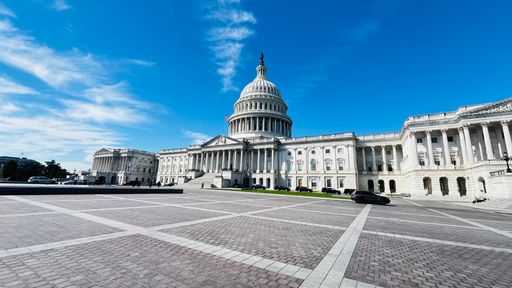At midnight on October 1, the US federal government went into a partial shutdown, the first since the 35-day crisis of 2018-2019.
Triggered by congressional failure to pass a funding bill for 2026, the government shutdown has suspended federally administered “non-essential” services and put hundreds of thousands of federal workers out of work for the foreseeable future.
Here are the whys and the hows of what experts describe as the US government’s act of self-sabotage.
What’s a shutdown?
In plain terms, the US government shutdown means a funding gap.
In most other nations, a failure to pass budgets would have usually resulted in fresh elections under the parliamentary system of government.
But the US government is different in the sense that the legislative branch (Congress) controls the purse strings, while federal agencies (the executive branch) spend the money.
The historical divide between the Republicans and the Democrats in the legislative branch, which consists of the House of Representatives and the Senate, causes a standoff every few years. The gridlock strips federal agencies of the legal authority to spend taxpayer money.
In technical terms, a shutdown takes effect when Congress doesn't pass the 12 annual spending bills or a temporary “continuing resolution” by the end of the US fiscal year on September 30.
“Essential” functions like air traffic control continue, but the rest of the federal government grinds to a halt.
Other federal services that are considered “essential” include those protecting life, health, and property. For example, active-duty military personnel and FBI agents continue working without immediate pay.
But federal workers performing “non-essential” services stop going to work. Staff responsible for national parks are furloughed, while food inspectors are told to stay home. Museums are shut, and passport processing faces delays.

How costly is it?
When the US government shuts down, the world’s largest economy loses millions of dollars by the hour.
For example, the 2018-2019 shutdown wiped off $3 billion from the US economy as consumers postponed purchases amid delayed wages.
Essential workers – about 1.4 million – are forced to survive without pay, which results in a sizable segment of the population dipping into their savings or taking out loans.
A 2019 law guarantees back-pay to all furloughed employees upon resumption of government business.
The Congressional Budget Office (CBO) estimates that roughly 750,000 federal employees could be furloughed each day of the current shutdown, with the total daily cost of their compensation at roughly $400 million.
How does it happen?
Shutdowns trace their birth to the 1974 Congressional Budget Act, which mandates 12 appropriations bills by October 1 – a condition that elected representatives in the US rarely comply with due to a never-ending political gridlock in Washington, DC.
Negotiations intensify in September every year ahead of the deadline. The Office of Management and Budget, the body responsible for implementing the president's agenda across the executive branch, directs federal agencies to activate contingency plans in case the Republicans and the Democrats do not reach a deal.
Employees are then classified as either “excepted” (essential) or furloughed.
At midnight on October 1, non-funded operations stop, as furloughed federal workers sleep in.
The federal government has had shutdowns as many as 21 times since 1976, when Congress adopted the existing budget approval process.
The longest shutdown took place during the first term of President Trump when the Democrats and the Republicans locked horns over the $5.7 billion funding for a US-Mexico border wall.

But why does it happen?
The US government shutdown is a reflection of extreme polarisation over spending priorities between the two major political parties.
Since the 1990s, the government shutdown has become a tool of brinkmanship, where the minority party leverages the threat to extract maximum concessions from the party in power.
Critics liken this process to hostage-taking, while proponents frame it in the language of fiscal discipline.
The current shutdown is ostensibly caused by the dispute between Republicans and Democrats over healthcare policy.
Republicans want to pass a bill that keeps the government funding levels for the next seven weeks at the existing level, as they finalise the details of a broader budget proposal with the Democrats.
But Democrats insist that any new spending bill must extend the enhanced health insurance subsidies offered under the Affordable Care Act, also known as Obamacare, named after former president Barack Obama. These subsidies will otherwise expire soon.
In addition, the Democrats have demanded that the spending bill must reverse President Trump’s recent cuts to Medicaid, a federal programme that provides health coverage to millions of Americans, including eligible low-income adults, children, pregnant women, elderly adults and people with disabilities.
Using shutdown to punish foes
The Trump administration plans to “maximise the pain” of the government shutdown for its opponents by halting billions of dollars in funds for Democratic-led states.
At the same time, the Trump administration is reportedly drawing up a plan to lay off civil servants in large numbers to achieve its broader goal of a smaller government with fewer employees.
Trump has vowed to “do things that are irreversible, that are bad” as retribution as the shutdown kicks in.
“So we'd be laying off a lot of people that are going to be very affected. And they're Democrats, they're going to be Democrats,” Trump said, adding a “lot of good can come down from shutdowns”.




















